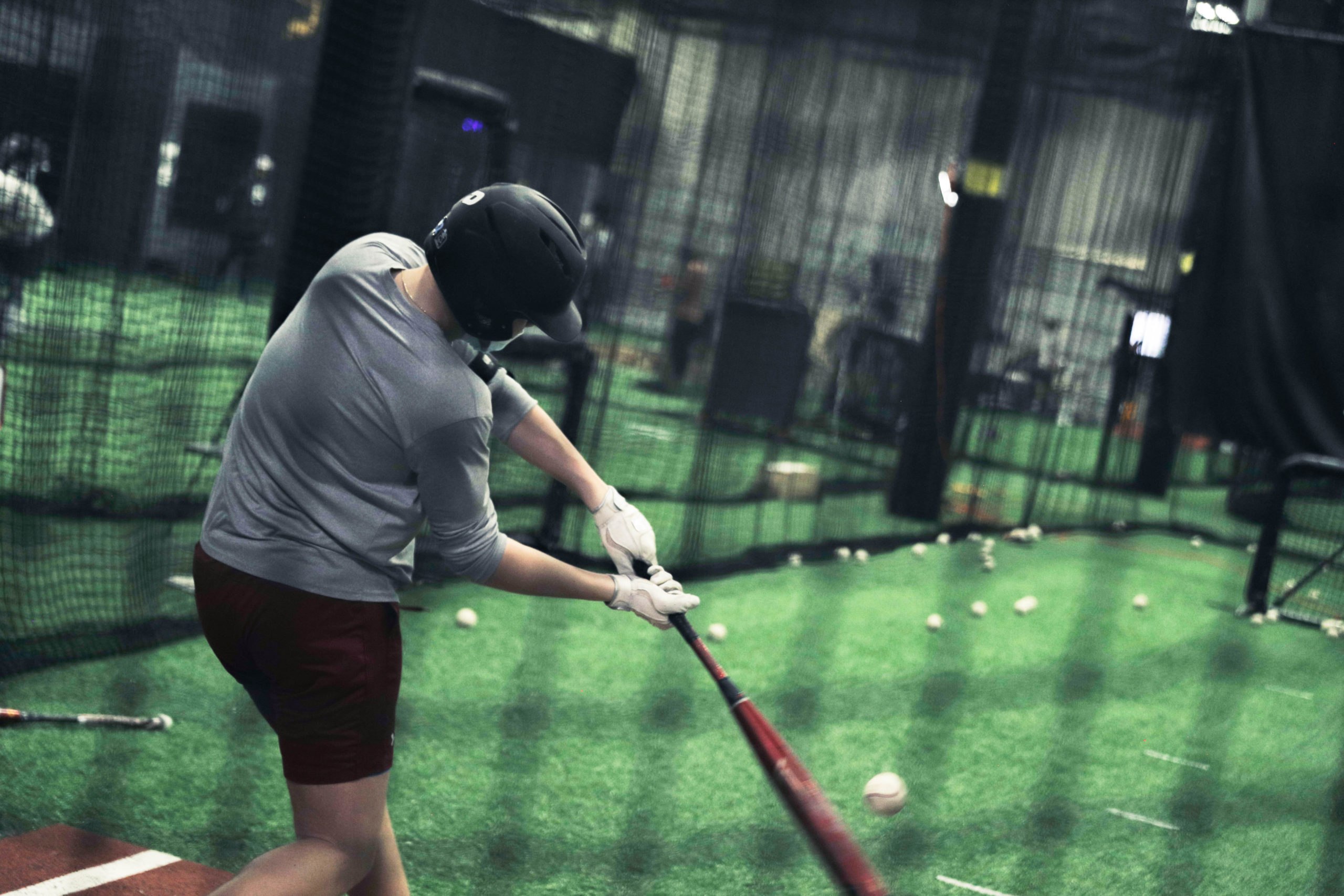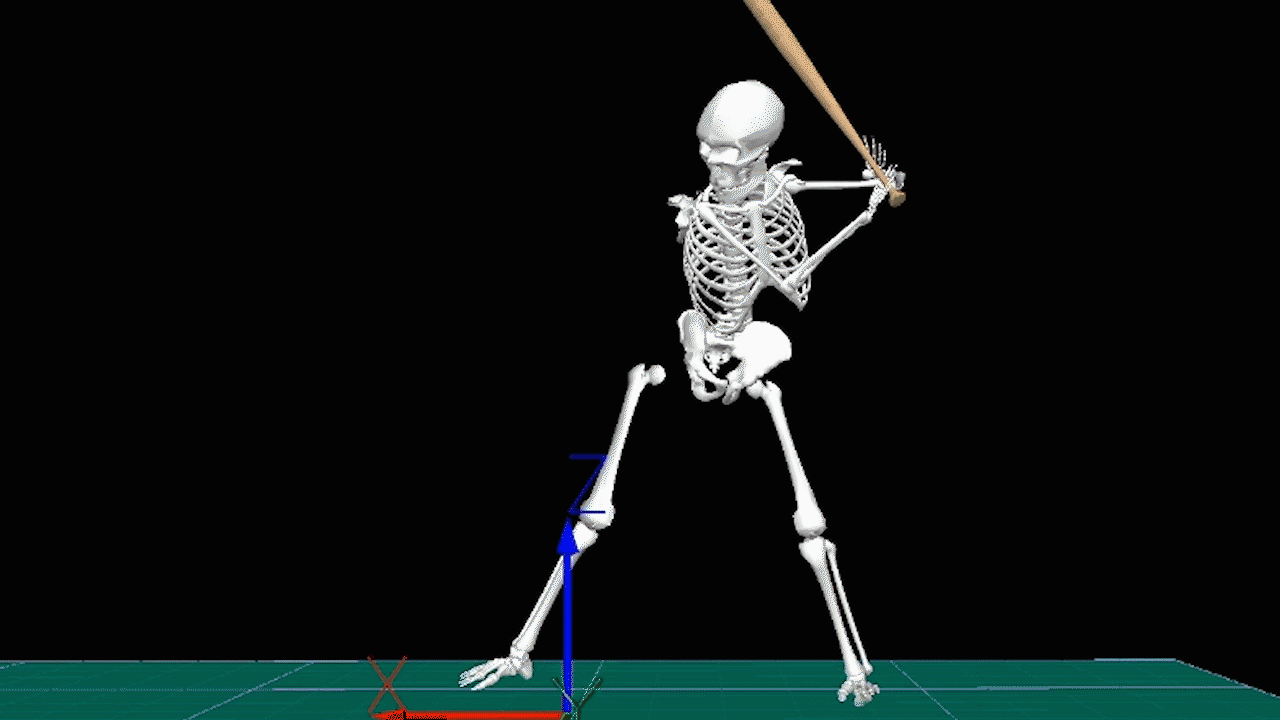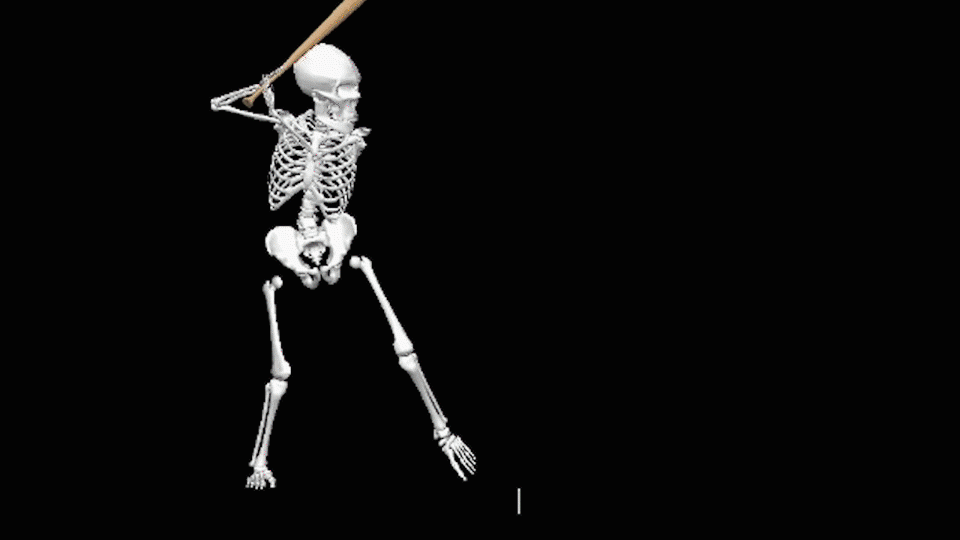Rolling Over: How Bottom Hand Supination Affects Bat Path

Have you ever been a little bit early on an off-speed pitch and grounded out to the pull-side? I mean, who hasn’t? But I’m talking about one of those swings where you jog back to the dugout thinking, “Man, I JUST missed that pitch.”
As baseball players, I think we can all relate to that feeling. One of the reasons this particular batted ball occurs so often is because of the unique relationship between point of contact, attack angle, and bat speed. The relationship works like this:
- Hit the ball farther out in front and your bat speed and attack angle will increase. This is great for hitting home runs but comes at the cost of inconsistent contact (a lot of roll-overs) and potential whiffs.

Foundations of Hitting
30 modules teaching you everything we know about hitting and hitting mechanics.
When looking at this relationship on Edgertronic video, I began to notice the bottom hand was playing an important role in these interactions. More specifically, I started to hone in on bottom hand supination—both its magnitude and when it occurs during the swing.
While we still know that training bat speed and exit velocity offer the biggest “bang for your buck”, a bottom hand adjustment might be just what you need to raise your game to the next level. Before we dive deep, let’s review a couple of key definitions.
KEY TERMS
Supination: Rotation of the arm outwards, or a movement in which a person turns their hand, wrist, and forearm upwards
Attack Angle: The angle of the barrel’s path relative to horizontal. A positive value indicates swinging up, a negative value indicates swinging down, and a value of zero indicates swinging perfectly parallel to the ground.
To help visualize attack angle, below I’ve broken a swing into three distinct attack angle phases: negative, level (close to 0°), and positive. During the negative phase, a hitter is swinging downwards and his/her attack angle will have a negative value. During the level phase, a hitter is swinging with a path that is much more parallel in relationship to the ground, and these attack angles will range anywhere between -2° and 2° approximately. Lastly, we have the positive attack angle phase, which by this point is pretty self-explanatory.
Attack Angle Transition
Every hitter’s attack angle will transition from negative → level → positive. The manner and timing in which this transition occurs is largely dependent on an athlete’s bat path, which is largely a function of their posture… but that’s another blog post for the future.
Moreover, you’ll notice that the level portion of this hitter’s swing is much shorter in comparison to the negative and positive phases. While not uncommon, as coaches it’s important to remember that no two swings are exactly alike. Armed with knowledge like this, Driveline trainers design a training program and an in-game approach with one goal in mind: getting our hitters to RAKE.

Become the Hitter You Want To Be
Train at Driveline
SUPINATION IN THE SWING
We’ve gotten through attack angle—now onto the fun stuff. When evaluating supination in the swing, I wanted to start by answering this question: What do swings look like with no supination, a lot of supination, and everything in between?
The following visuals should provide a clear answer. I strongly recommend viewing each GIF at least two times. First time, focus only on the bottom hand and the act of supination. Second time, focus only on the barrel and how it’s moving. For the ambitious readers out there, a third time through offers a great opportunity for conceptualizing the relationship between the two.
Most Supination
Ok, now I know what you’re thinking…“Cool vizis, but I don’t swing with one hand.” Excellent point and a great reason to continue reading!
Below are examples of two-handed swings that fall into the “most supination” category. I highly recommend using the aforementioned viewing strategy.
When looking at these swings, a few things stand out:
- Bottom hand supination and top hand pronation share a relationship. However, the bottom hand is closer to the fulcrum/axis of rotation, and this could potentially cause the bottom hand to play a more prominent role in the bat’s path
- Hard supination pulls the barrel upwards, resulting in a rapid attack angle increase.
- Hard supination alters the bat’s horizontal bath path by pulling the barrel towards the third base dugout.
Medium Supination
Supination definitely impacts bat path, but it’s time for me to confess something… I cherry-picked these examples. Let’s look at a couple of swings that land in the “medium supination” range of the spectrum.
A few of my observations on these medium supination swings:
- The barrel continues to increase in attack angle, but at a slower rate.
- The horizontal angle of the bat continues through center field for a longer period of time, as opposed to pulling towards the third base dugout.
- Supination is occurring later in the swing.
WHY DOES ANY OF THIS MATTER?
While the act of supination alters bat path, it looks like the timing of supination plays an important role as well. Because hitting is such a precise skill, a swing that produces hard-hit balls, even when you’re not on time, is extremely valuable. Now, please bear with me while I dive into some technical details.
The optimal attack angle for contact is 6°, while the optimal attack angle for maximum distance is 18°. A swing that arcs through the zone with an attack angle between 6°-18° seems optimal. Attack angles below 6° result in ground balls as well as clipped, low exit velocity fly balls. Conversely, attack angles above 18° produce home runs, but at the cost of more high fly balls, top spun grounders, and whiffs. If excessive/early supination is raising your attack angle over 18°, it’s probably a good idea to make a swing adjustment. Without an improvement, any contact made out in front (where supination affects bat path the most) with an attack angle greater than 18° will be less likely to produce a valuable batted ball.
TL;DR
- Attack angles between 6°-18° are advantageous.
- Early/excessive supination may increase attack angle over 18°, leading to unproductive batted balls.
HITTING MOTION CAPTURE

While writing this blog, it was exciting to know that our hitting motion capture lab will help address these questions in a much more scientific manner. One of my main goals with this blog is to demonstrate the value of pairing swing kinematics with bat path characteristics, and then to illustrate these connections with relevant visuals. I hope I’ve succeeded on this front!
DRILLS
Do you feel like early or excessive supination is holding your swing back? Try these drills 👇.
Bottom Hand Drill
Purpose – Great for proper timing of supination.
Doing it Well – Supination occurs at the correct time and your barrel stays through the hitting zone. Squaring the ball up will come naturally because of the extra swing depth and it will feel like the barrel works through the pitcher for a longer period of time.
Common Mistakes – Supinate too much or too early and you’ll feel the barrel pull out of the hitting zone, upwards, and towards the third base dugout. You’ll hit a lot of pull-side top spin grounders and high launch angle (above 35°) fly balls.
Offset Open
Purpose – Works on two-handed barrel path and direction.
Doing it Well – You’ll be able to hit hard line drives up from gap-to-gap. Even if you catch the ball deep or hit it out in front, your swing will still produce solid line drive contact.
Common Mistakes – Pulling the bat up and out of the strike zone. This makes it very difficult to make solid contact. These swings will produce pull-side ground balls and flares to the opposite field.
Short Bat
Purpose – Because of the Axe Short Trainer’s size (28”, 31oz), any type of early or excessive supination is magnified.
Doing it Well – Take your game swing and hit balls flush and at line drive launch angles (10°-30°) to all areas of the field.
Common Mistakes – Hitters feel like they “run out of barrel” and mistake swings will result in top spun pull-side grounders and whiffs.
TRAIN AT DRIVELINE
Interested in training with us? (In-gym and remote options are both available.)
- Athlete Questionnaire: Fill out with this link
- Email: support@drivelinebaseball.com
- Phone: 425-523-4030
By John Soteropulos – Hitting Trainer
Comment section
Add a Comment
You must be logged in to post a comment.
bubabaseball -
Nice write up Jon! Are you able to say what the optimal time of contact should be in relation to the supination? i.e contact should be when supination has just started (within 10% of the full supination process). I am a left handed pitcher so please don’t report me to authorities for commenting on hitting.
John Soteropulos -
Thank you! This is a great question, and don’t worry…I won’t report you! So, athletes will have varying amounts of supination when they swing the bat. Some hitters will supinate a lot like Harper, and some guys will supinate less like Arenado. These hitters have different swings, but they are both still very productive. I hesitate to put a range on the optimal amount/timing of supination because I see a lot of really good hitters on both ends of the spectrum. What I will say, however, is that I think using this knowledge to evaluate a player’s swing can be very valuable. I would start by asking these questions, “Is bottom hand supination affecting this athlete’s swing in a negative fashion? If yes, is it because the supination is occurring too early, is there too much supination, or is it a combination of both?” My guess would be that it’s probably a combination of both. Next, I would see how this swing flaw is affecting their contact and/or batted balls. If a hitter rolls his wrists really hard, but produces at a very high level and has strong peripheral stats, he might be a candidate for a smaller swing change (or no swing change at all). Vice versa, if a hitter rolls his wrists super hard, does not hit well, and has weak peripheral stats, he/she could be a good candidate for a more severe swing intervention. Looping back to your original question, it’s hard to give a definitive answer. I think the most effective route would be using the knowledge from this blog and combining it with the hitter’s batted ball/bat sensor metrics. Using all of this information together will give us a better idea of what optimal supination looks like for that athlete. I hope this info helps, and thanks for reading!